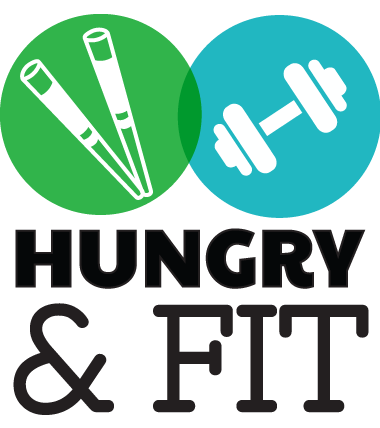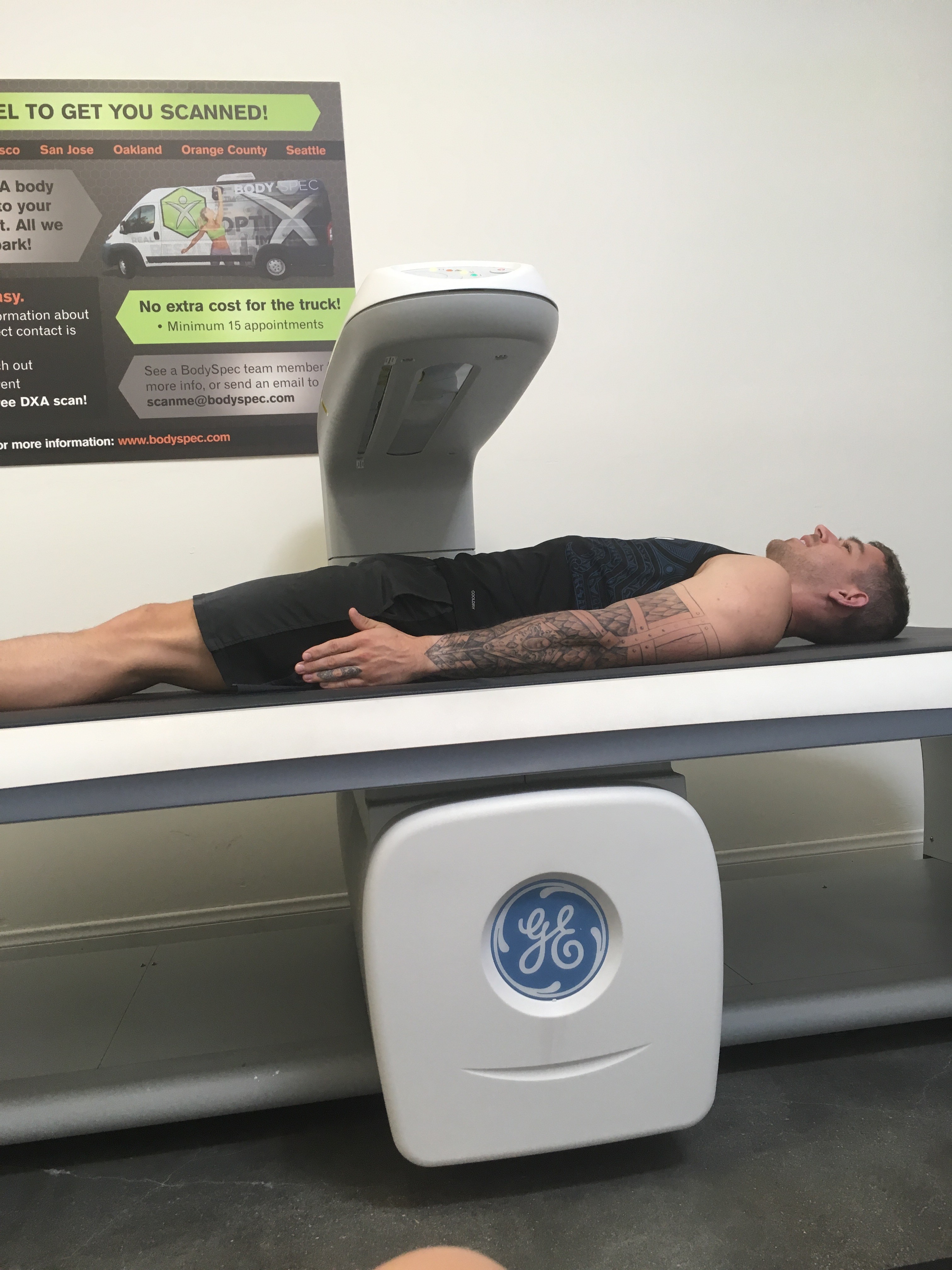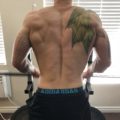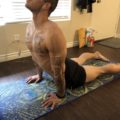Yesterday was a rest day, but it started with a relatively in-depth test called a DXA Scan. This seven minute x-ray gives you more detail about your body composition than calipers, scales and hand-held devices and while it costs $45, there are massive benefits to using it. While we generally don’t find it necessary to track every rep and count every calorie, measuring your progress and results are often crucial to success. When you consider someone who is extremely fit, you might think of an Olympic decathlete. Whether they’re throwing, jumping or running, the world’s best measure every inch and second, because that allows them to improve.
‘Measurables’ hold us accountable and therefore allow us to get better every single session. If you lifted 10 lbs for 10 reps one day with a certain technique, you wouldn’t necessarily be very happy if you used that same technique and only lifted 10 lbs for 9 reps the next time you performed. You’d want to either lift 11 lbs for 10 reps or 10 lbs for 11 reps, if you’re maintaining all of the other factors taken into consideration while exercising, such as rest intervals and technique based numbers such as eccentric/concentric timing, etc.

Again, we’re not telling you to measure everything related to your overall health and wellness; it can be very stressful and work against you sometimes. It might give you the same effect as hopping on the scale every single morning. It can be mentally draining, but consider using some figures to keep you on track and allow yourself to set some hard goals, whether that means running a mile in a certain time, lifting a certain amount of weight or decreasing your body fat percentage by x, y or z.
As you might have realized by what we mentioned earlier, our DXA scans, that we usually get every quarter, has been our greatest factor in changing our lifestyle choices. If you’re in the LA area and are interested in getting one of theses scans, try out Bodyspec. We love them! Hungry recently had his 9th, while fit had her 5th. Being fit is absolutely a lifestyle, which is much more so a marathon than a sprint, so you’re going to have ups and downs. Hungry has seen all kinds of numbers since his first scan in late February 2016, when he clocked in at 12.4% body fat and 173.7 lbs of lean muscle tissue. On Sunday, his total body fat was only 11.7%, with 174.8 lbs of lean muscle tissue.
Unfortunately, a string of injuries over that period, including a rotator cuff, a hip labrum and a soleus has increased his muscular imbalances. His poor eating habits over time has led to his overall increase in visceral fat from .53 lbs/15.42 cubic inches to .80 lbs/23.40 cubic inches. That is an alarming number, that is mostly the result of dietary decisions and a lack of “cardio” in a routine. His right arm has much more fat than his left, while his right less has more fat and muscle than his left, which is most likely the result of his torn left soleus. All of these numbers, however, will allow Hungry to adjust his workouts to try to become more balanced. Finally, the test showed that lean muscle tissue increased in every body region, so something has been going well since the last test, on February 3rd, 2018.
Whether you’re working on your own or working with a coach, consider what matters most to you and what would be the best numbers to track. While it usually isn’t necessary for anyone except a professional, Olympic or elite athlete to track nearly every number, it helps to keep yourself accountable in some way that can be measured. You can be working your tail off and spending a ton of money to get results, but if you’re not seeing progress, something needs to change because that is how you get and stay hungry and fit!










